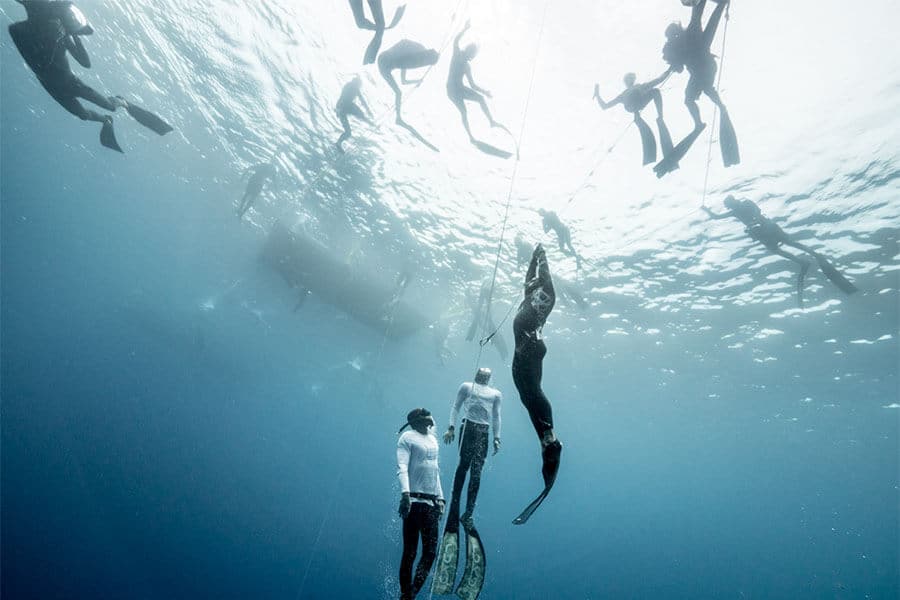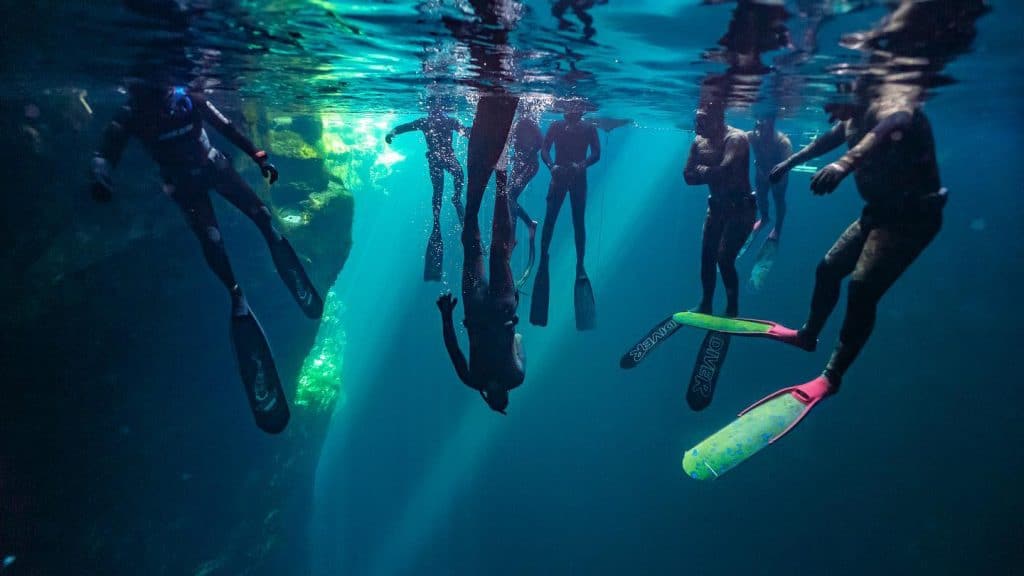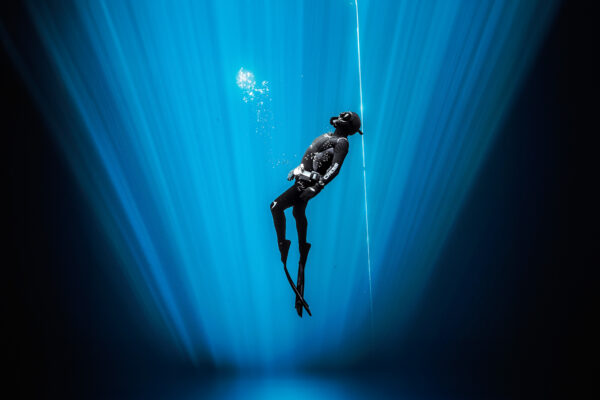As a freediver, is it possible for you to experience the effects of nitrogen narcosis? Well, yes, but only at extreme depth.
If you’re wondering how exactly these processes work, keep reading.
In this short article, I’ll go over the basics of how narcosis can occur in freediving.
DISCLAIMER: The average freediver/spearfisher will likely never experience nitrogen narcosis. This us because these processes ONLY happen at extreme competition-style depths of about 60 metres. Usually, freedivers will not surpass 15 metres of depth. For example, in the PADI Freediver course you will learn how to safely dive to 10 metres. In the PADI Advanced Freediver course, you lean how to safely dive to 20 metres. In the PADI Master Freediver course, you learn how to safely dive to 30 metres. While participating in a PADI Freediving course, you will not experience nitrogen narcosis, and it is near impossible for anyone to freedive to 60 metres without any previous training.

To put it all in layman’s terms:
The air we hold in our lungs is 78% nitrogen. This nitrogen grows more soluble into our tissues (it dissolves into our tissues) as pressure increases. So, when freedivers dive deep, say around 50-60 metres, or perform repetitive deep dives, then the nitrogen begins to accumulate and cause nitrogen narcosis.
There’s also an interesting thing to note about narcosis in freedivers vs. scuba divers:
Freedivers have a much higher level of CO2 buildup in their bodies, which changes how narcosis is experienced. Also, because of the relatively fast ascent compared to scuba, freediving narcosis will typically last the entire way to the surface.
Wherever you are in your journey into the blue…
These are a few very important pieces of information to fully understand. While freediving is a fun and safe sport when practiced wisely, it commands and requires a level of respect for your body’s limits and the water itself. To keep learning more about topics like this, follow our Instagram page or Facebook!



